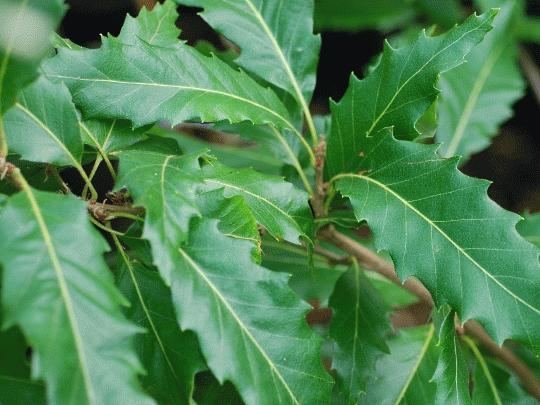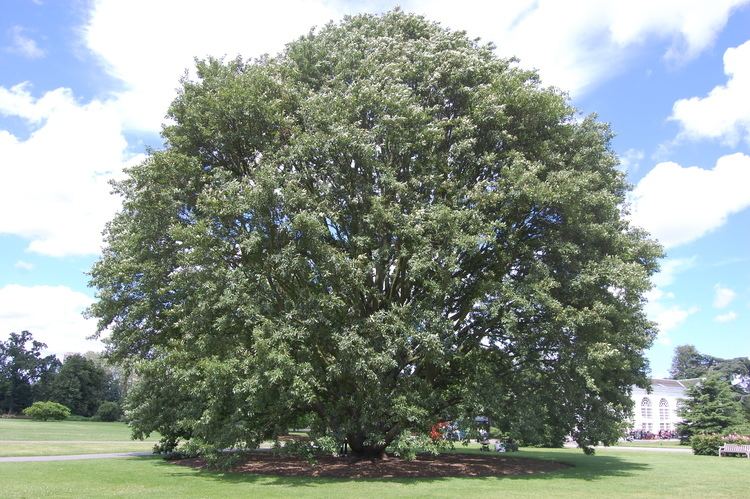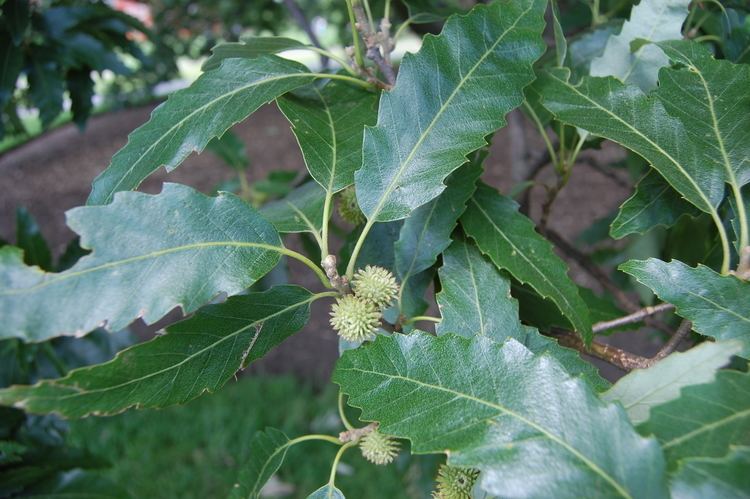Section Cerris Higher classification Oak | Genus Quercus Scientific name Quercus castaneifolia Rank Species | |
 | ||
Similar Oak, Quercus macranthera, Quercus libani, Quercus pontica, Quercus imbricaria | ||
Quercus castaneifolia, the chestnut-leaved oak, is a species of oak in the turkey oak section Quercus sect. Cerris. It is native to the Caucasus and Alborz mountains of Iran, and resembles the closely related Turkey Oak in appearance.
Contents
Description

Q. castaneifolia is a deciduous tree growing < 35 m tall, with a trunk < 2.5 m diameter (exceptionally up to 50 m tall with a trunk < 3.5 m diameter). The leaves are 10–20 cm long and 3–5 cm wide, with 10–15 small, regular triangular lobes on each side. The flowers are wind-pollinated catkins; the fruit is an acorn, maturing about 18 months after pollination, 2–3 cm long and 1.5–2 cm broad, bicoloured with an orange basal half grading to a green-brown tip; the acorn cup is 2 cm deep, densely covered in soft 4–8 mm long 'mossy' bristles. The acorns are very bitter, but are eaten by jays and pigeons; squirrels usually only eat them when other food sources have been exhausted.
Cultivation

The tree was introduced to England in 1846, but remains relatively rare in collections despite being a vigorous grower. A tree from the original introduction is at the Royal Botanic Gardens, Kew, another survives at the Harlow Carr arboretum in Yorkshire.
The cultivar Quercus castaneifolia 'Green Spire' has been selected for its erect growth.
